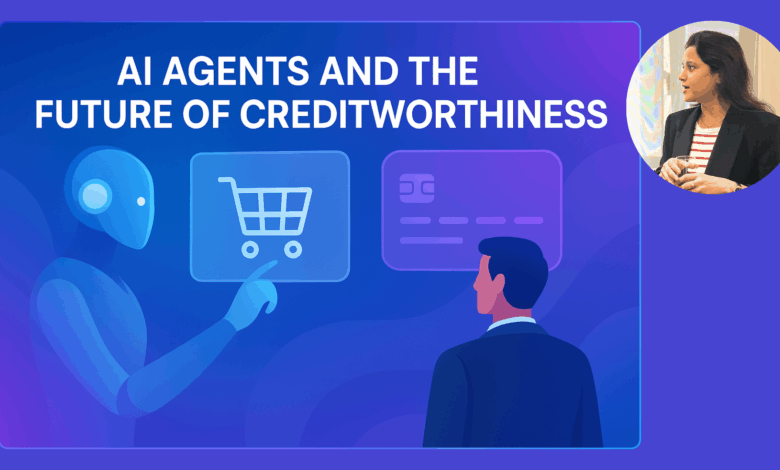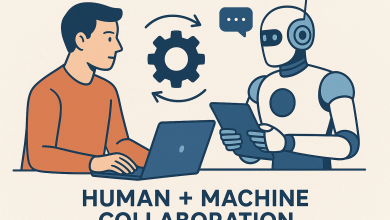
Abstract
AI Agents will buy On Our behalf. But who will they trust with credit?
With Perplexity launching Comet and OpenAI introducing ChatGPT agents, we’re entering a future where AI doesn’t just assist—it acts. These agents can discover products, compare offers, negotiate terms, and complete purchases on our behalf.
But here’s the fundamental question: if your AI wants to use BNPL or apply for credit, whose data will it use, and whose definition of creditworthiness will it trust? Historically, credit bureaus have held the keys to our financial reputations.
In an AI-led world, decisions may be driven by real-time behavioral data—from payment rhythms to digital sentiment logs. Tech giants like Apple, Google, Meta, and Amazon could become the new backbone of financial trust, while traditional bureaus may be forced to become data providers—or risk irrelevance.
This article explores the implications of autonomous AI agents in consumer finance, the shifting locus of trust in credit scoring, and the governance challenges this new paradigm presents.
1. Introduction: From Assistants to Autonomous Agents
The leap from “assistive” AI to autonomous AI agents marks one of the biggest rewires of financial infrastructure since the invention of the credit card.
With companies like OpenAI introducing agent frameworks in 2025 and Perplexity’s Comet AI assistant designed for autonomous task execution, the stage is set for machines to transact on behalf of individuals.
For fintech and banking, this isn’t just another UX shift—it’s a potential redistribution of trust. If agents mediate consumer financial choices, they will, by extension, reshape how creditworthiness is defined, accessed, and scored.
2. The Legacy Model: Bureaus as Gatekeepers
Credit scoring as we know it today rests on decades of dominance by major credit bureaus. These firms built their models on repayment history, debt utilization, and institutional reporting.
While widely adopted, this system has been criticized for being:
Lagging — data is often months behind.
Exclusionary — thin-file or credit-invisible consumers struggle to participate.
Opaque — individuals rarely understand the algorithms shaping their financial access.
Despite flaws, this bureau system forms the global backbone of lending risk models. But the rise of AI agents could fracture this monopoly.
3. AI Agents and the New Definition of Trust
If an AI agent is tasked to “find the best BNPL option” or “apply for a credit line under $5,000,” it will need to decide whose version of your creditworthiness matters. Here’s how the fault lines emerge:
1. Real-Time Behavioral Data:
Instead of backward-looking bureau files, agents may weigh streaming signals like utility payments, e-commerce purchase history, subscription renewals, or even chat interaction tone.
2. Platform-Owned Identity:
Big tech players (Apple Wallet, Google Pay, Amazon’s marketplace ecosystem) already hold granular purchase, repayment, and even location-specific spend patterns. If agents tap these signals first, they bypass traditional bureaus.
3. Autonomous Risk Negotiation:
AI agents may negotiate credit terms in real time, forcing lenders to open their models via APIs to machine-to-machine bidding. The question becomes not “do you trust this customer?” but “does the customer’s agent trust your offer?”
4. Risks and Fault Lines
This rewiring comes with deep systemic risks:
- Bias Migration: If agents are trained on biased behavioral data, they may reinforce inequalities faster than bureaus ever did.
- Fraud Surfaces: Autonomous checkout and BNPL applications could trigger synthetic identity fraud on an unprecedented scale.
- Data Wars: A new battle looms between bureau-owned historical data and tech-owned contextual data. Whoever controls the pipelines may control lending economics.
- Auditability: If your agent applies for credit and is denied, who can you appeal to—the bank, the bureau, or your AI model’s training set?
5. Strategic Implications for Fintech and Banks
For founders and financial institutions, this is not a distant concern—it’s an imminent redesign of the financial rails. Key questions include:
-Should banks partner with tech giants to access agent-readable credit data?
-How do regulators enforce audit trails for AI-driven financial decisions?
-Will bureaus pivot to become data suppliers to AI ecosystems, or will they fade into irrelevance?
-Can fintech startups build trust-first agent frameworks, where transparency in credit scoring becomes a differentiator?
Conclusion
AI agents are not just consumer conveniences—they are economic actors. In a near future where your AI buys, borrows, and negotiates for you, the definition of creditworthiness will no longer sit in the files of three bureaus. It will be contested across real-time behavioral data streams, tech-owned identity ecosystems, and algorithmic negotiations.
This shift is not just a question of efficiency—it’s a fundamental rewiring of trust in finance.
The institutions that respond now—by embracing transparency, interoperability, and responsible AI in credit decisions—will shape the next financial era. Those that hesitate risk becoming irrelevant to the agents that increasingly act as our economic proxies.





